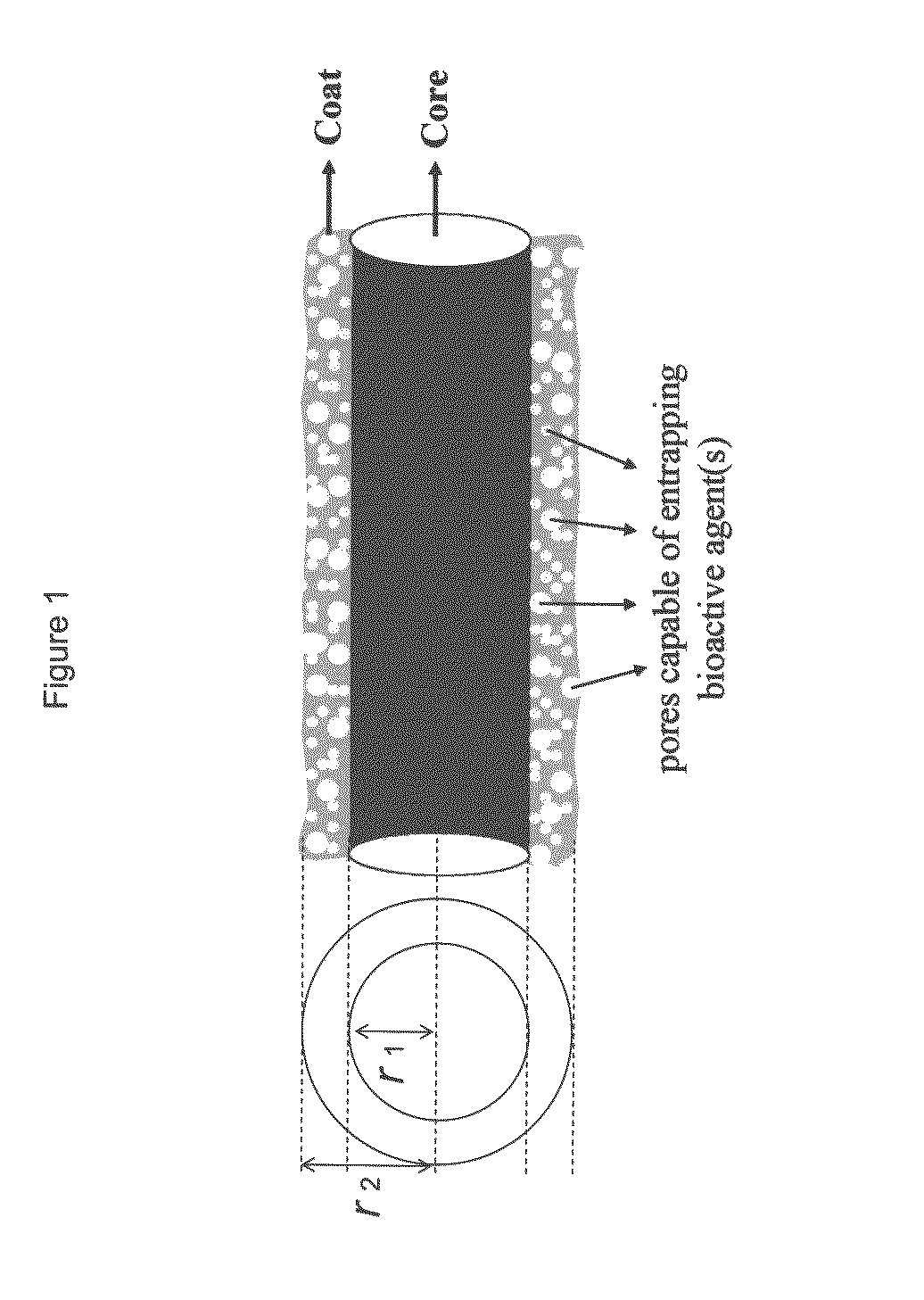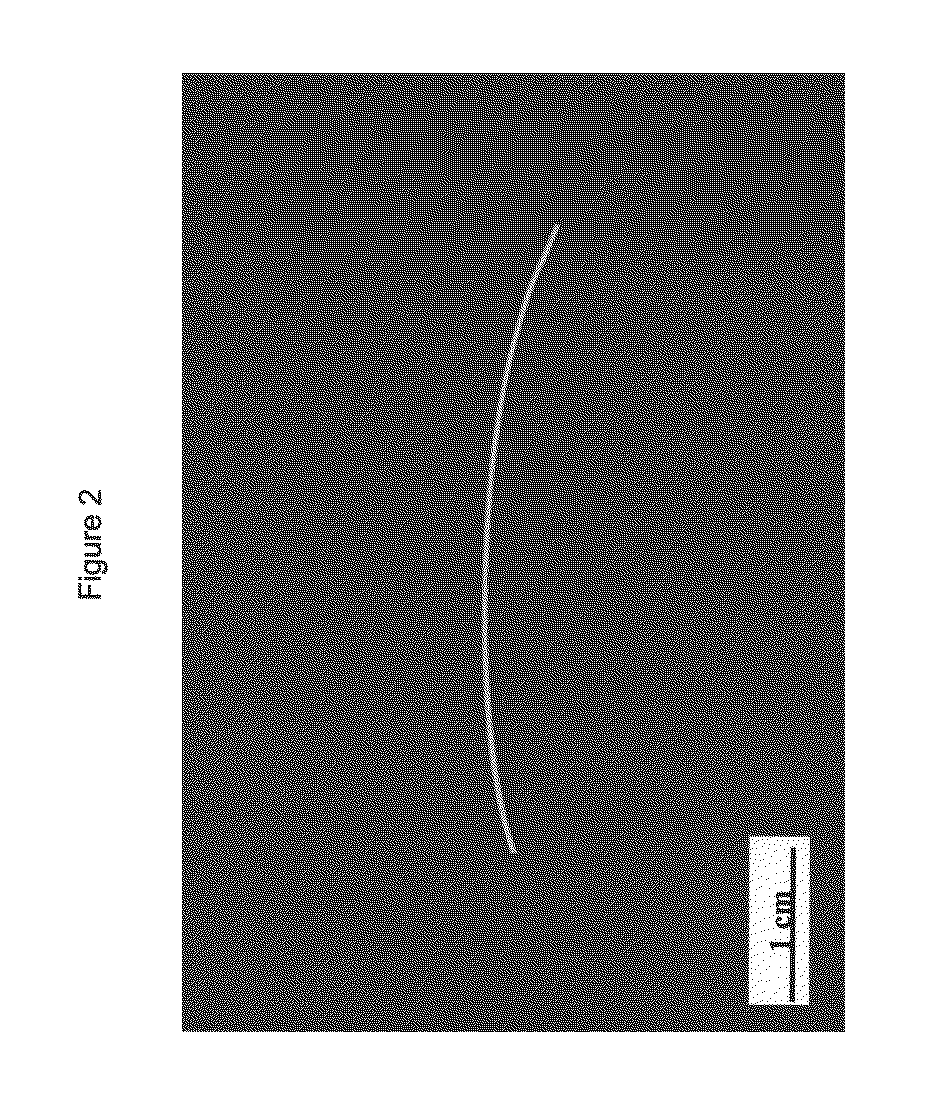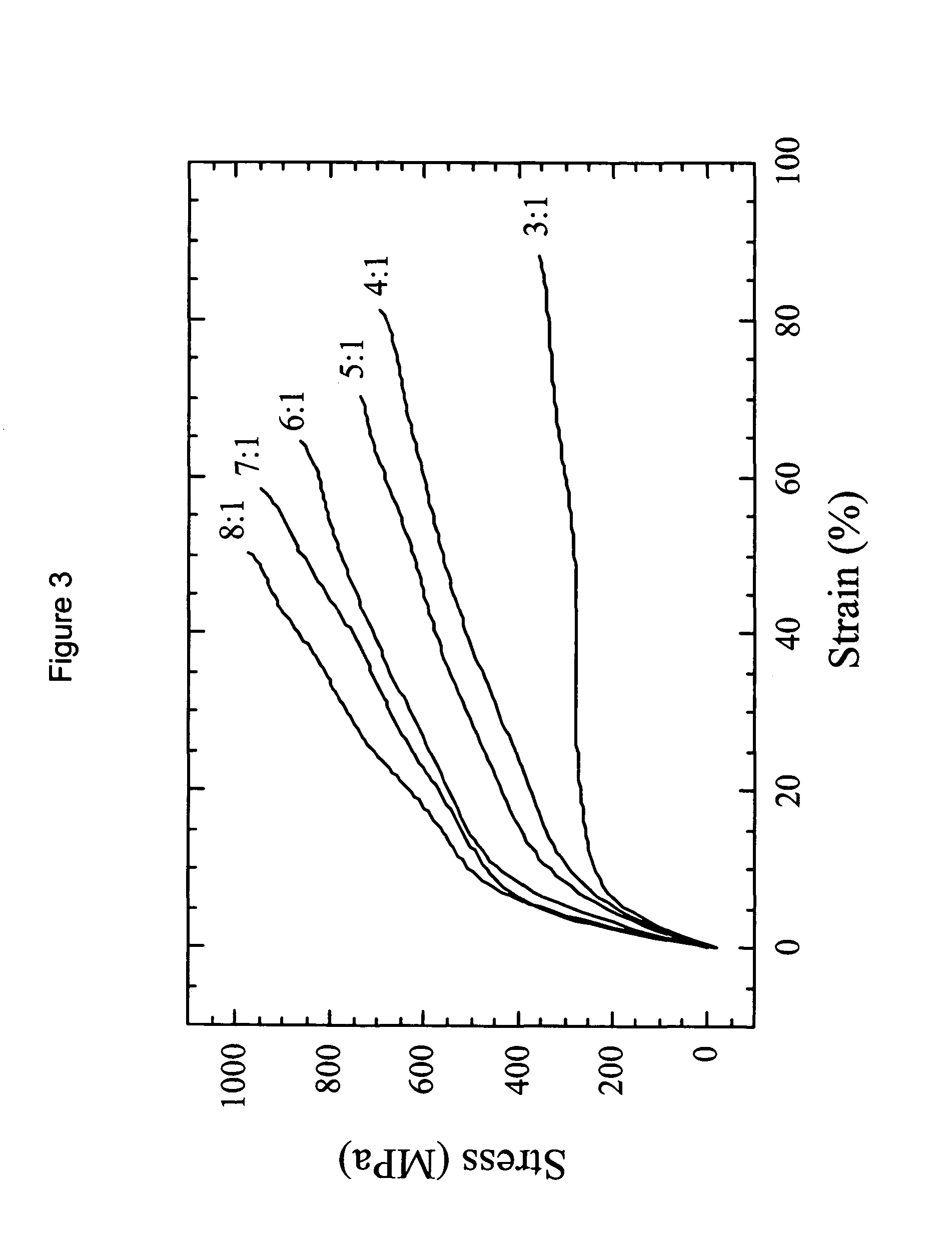Drug-delivering composite structures
a composite structure and drug technology, applied in the field of material science, can solve the problems of inactivation of bioactive molecules in incorporation and delivery of biodegradable structures, organ and tissue failure or loss is one of the most frequent and devastating problems still challenging human health care, and the drug release profile is relatively uncontrolled
- Summary
- Abstract
- Description
- Claims
- Application Information
AI Technical Summary
Benefits of technology
Problems solved by technology
Method used
Image
Examples
examples
[0392]Reference is now made to the following examples, which together with the above descriptions, illustrate the invention in a non limiting fashion.
Materials and Experimental Methods
[0393]Poly(L-lactic acid) (PLLA, cat. RESOMER L210, inherent viscosity=3.6 dL per gram in CHCl3 measured at 30° C.), obtained from Boehringer Ingelheim, Germany, was used to form a biodegradable fibril core composed of a relatively high molecular weight PLLA.
[0394]Poly(DL-lactic-co-glycolic acid), 75% / 25%, (PDLGA, cat. 75DG065, inherent viscosity=0.65 dL per gram in CHCl3 measured at 30° C., molecular weight of approximately 118,000 grams per mole), obtained from Absorbable Polymer Technologies, Inc, USA, was used to form a biodegradable porous coat.
[0395]Horseradish peroxidase (HRP) with an initial enzymatic activity of 500 U / mg, was obtained from Aldrich, and served as a protein model.
[0396]A BCA™ Protein Assay Kit, obtained from Pierce, was used for measuring the protein content of solutions with a ...
PUM
| Property | Measurement | Unit |
|---|---|---|
| tensile strength | aaaaa | aaaaa |
| pore diameter | aaaaa | aaaaa |
| thickness | aaaaa | aaaaa |
Abstract
Description
Claims
Application Information
 Login to View More
Login to View More - R&D
- Intellectual Property
- Life Sciences
- Materials
- Tech Scout
- Unparalleled Data Quality
- Higher Quality Content
- 60% Fewer Hallucinations
Browse by: Latest US Patents, China's latest patents, Technical Efficacy Thesaurus, Application Domain, Technology Topic, Popular Technical Reports.
© 2025 PatSnap. All rights reserved.Legal|Privacy policy|Modern Slavery Act Transparency Statement|Sitemap|About US| Contact US: help@patsnap.com



